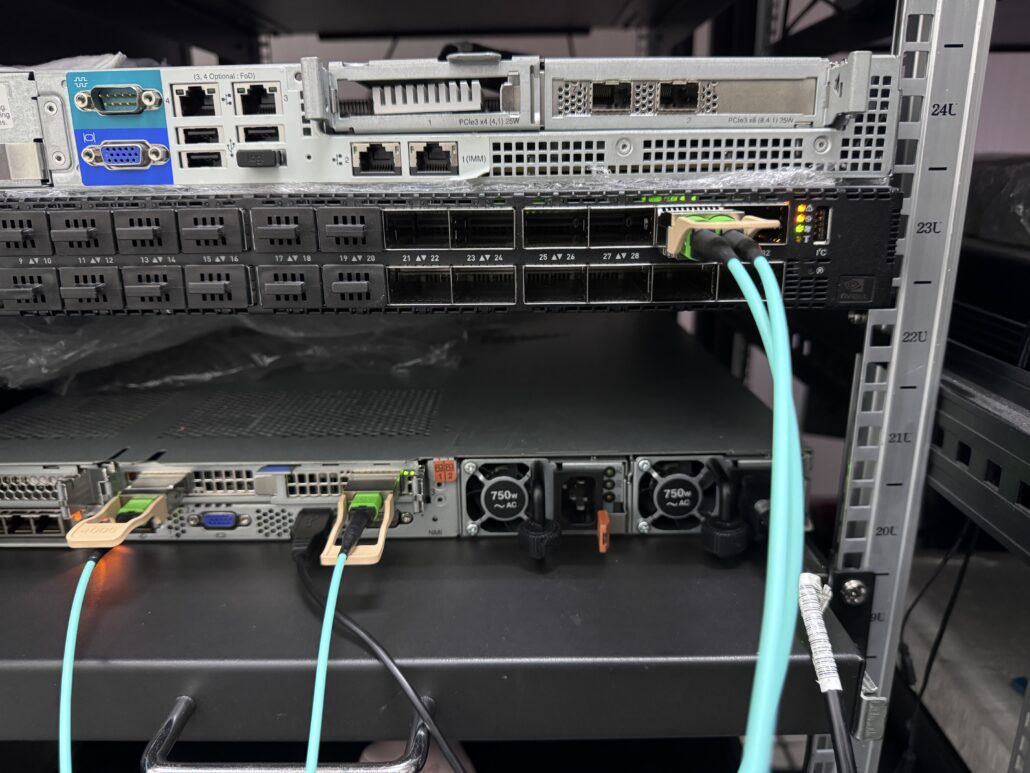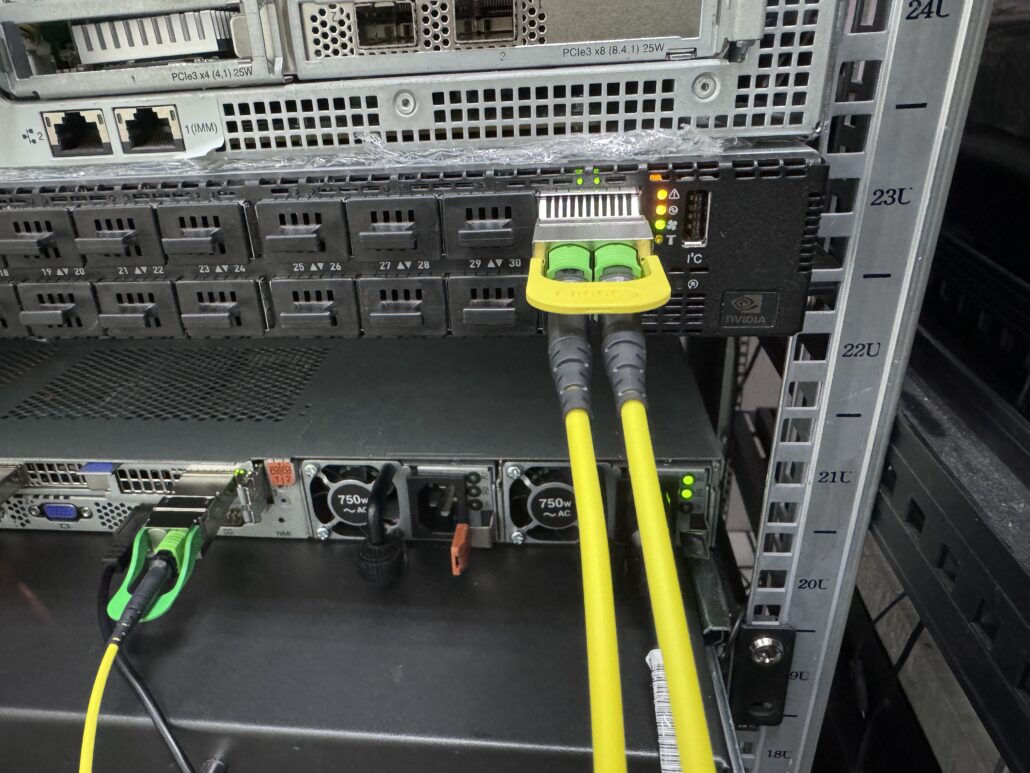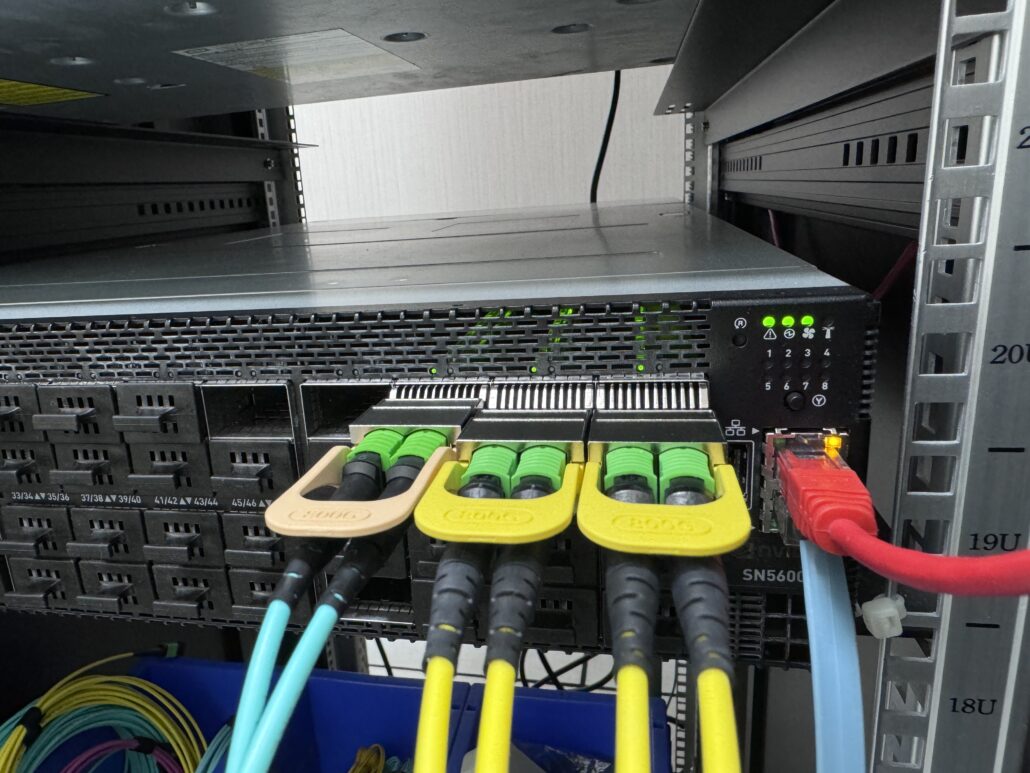As the demand for high-performance computing (HPC), artificial intelligence (AI), and large-scale data processing grows, networking infrastructure is under immense pressure to evolve. High-speed optical modules are a cornerstone of this transformation, enabling faster data transmission between servers, switches, and storage systems. NVIDIA, a leader in AI, GPU-accelerated computing, and high-performance networking solutions, heavily relies on cutting-edge optical technologies to meet the growing demands of modern applications.
In this context, both 800G and 400G optical modules play pivotal roles in enhancing the performance and scalability of NVIDIA’s solutions. These optical transceivers are essential in enabling high-speed, low-latency connectivity for workloads such as AI model training, deep learning, data analytics, and high-performance computing.
1. Overview of 400G and 800G Optical Modules
400G optical modules are designed to support transmission speeds of up to 400 gigabits per second (Gbps), while 800G optical modules double that capacity, delivering up to 800 Gbps of bandwidth. Both are used in data center interconnects, storage area networks (SAN), and high-speed networking between GPUs and servers, which are integral to NVIDIA’s ecosystem.

- 400G Optical Modules: These modules provide a significant leap from previous generations, offering high throughput with lower power consumption. They are commonly used in existing data center architectures to meet the increasing bandwidth needs of applications like AI inferencing, cloud computing, and large-scale simulations.
- 800G Optical Modules: Representing the next generation of optical connectivity, 800G modules push the boundaries of network capacity. With their higher data rates, they are designed to handle even more demanding workloads such as real-time AI model training, complex simulations, and massive data analytics that NVIDIA’s systems frequently process.
2. Key Applications in NVIDIA’s Ecosystem
2.1 Accelerating AI Model Training
Training AI models, especially deep neural networks (DNNs) and transformer models, requires substantial computational power and fast data throughput. NVIDIA’s DGX systems and A100 Tensor Core GPUs are often used in tandem with powerful networking hardware to ensure that data can be transferred quickly between GPUs and storage systems.
- 400G Optical Modules: These modules are used in systems that process less intensive workloads, such as AI inferencing and mid-range model training. In this context, 400G modules connect NVIDIA’s DGX systems, providing efficient, high-speed data transfer between the GPUs and other components.
- 800G Optical Modules: As AI models grow larger and more complex, the demand for higher bandwidth becomes critical. 800G optical modules allow NVIDIA’s cutting-edge AI training systems to handle massive datasets and model parameters in real time. This allows for faster model convergence, reducing training times for deep learning algorithms and improving overall system performance.
2.2 High-Performance Computing (HPC)
NVIDIA’s HPC solutions, like the NVIDIA DGX SuperPOD and NVIDIA NVLink, are designed to tackle the most complex scientific and engineering problems, including climate modeling, simulations, and drug discovery. These solutions demand ultra-fast, low-latency networking to ensure that large-scale computations are processed efficiently across multiple GPUs and nodes.
- 400G Optical Modules: In HPC applications, 400G modules are often deployed in existing architectures to enable high-speed communication between GPUs, servers, and storage systems. This facilitates fast data transfers necessary for simulations and complex calculations.
- 800G Optical Modules: For the most demanding simulations and real-time processing, 800G modules provide the necessary bandwidth to maintain low latency and high throughput. In large-scale NVIDIA HPC clusters, these modules are vital for scaling performance while ensuring that multiple GPUs across nodes can communicate seamlessly without bottlenecks.
2.3 Data Center Interconnects
NVIDIA is deeply involved in building data center infrastructure for cloud computing, edge computing, and enterprise customers. Data centers are the backbone of AI services, and the need for fast and reliable interconnects between storage, servers, and GPUs is paramount.

- 400G Optical Modules: These modules are often used for intra-data-center communication where they connect NVIDIA GPUs and servers within a single data center, ensuring high-throughput connectivity and reducing latency in cloud-based AI workloads.
- 800G Optical Modules: In large-scale data centers or cloud service providers’ infrastructure, 800G modules are deployed to interconnect multiple racks, servers, and storage devices, enabling the seamless flow of data between systems. This is especially crucial as the size of datasets and computational power required for AI and machine learning applications continue to grow. These high-capacity modules ensure that data is transferred rapidly across vast distances within data centers, supporting ultra-low latency and high availability for AI and HPC workloads.
2.4 Scalability and Future-Proofing
As AI, machine learning, and HPC applications evolve, the demand for network bandwidth and low-latency connectivity will only increase. NVIDIA’s customers expect solutions that can scale and adapt to the growing computational and data requirements.
- 400G Optical Modules: These modules offer a solid solution for current-generation systems that require high-performance interconnects. For many applications, 400G modules strike the right balance between performance and cost-effectiveness, allowing businesses to deploy and scale their AI and HPC infrastructure without over-investing in future-proofing.
- 800G Optical Modules: As the industry looks toward the next decade of AI and HPC development, 800G modules offer the bandwidth and capacity to future-proof data center networks. For instance, when NVIDIA’s Grace CPU and Hopper GPU architectures come to market, 800G optical modules will be essential in scaling network infrastructure to meet the demands of next-generation AI and deep learning tasks.
3. The Impact of 400G and 800G Optical Modules on NVIDIA’s Networking Solutions
Both 400G and 800G optical modules are essential in helping NVIDIA remain at the forefront of high-performance computing and AI technologies. These optical transceivers are integral to NVIDIA’s BlueField Data Processing Units (DPUs), Mellanox InfiniBand, and NVIDIA Spectrum Ethernet switches, which provide the networking fabric for modern data centers.
NVIDIA Spectrum: NVIDIA Spectrum switches, which support both Ethernet and InfiniBand networking, are optimized for AI and HPC workloads. With the introduction of 400G and 800G optical modules, Spectrum switches can scale to support more GPUs, more nodes, and faster data transfers, ensuring that the overall system is not limited by networking constraints.
Mellanox InfiniBand: Known for its low-latency and high-bandwidth capabilities, Mellanox InfiniBand interconnects benefit significantly from the capabilities of 400G and 800G optical modules. These modules allow InfiniBand to meet the ever-increasing demands for AI-driven data processing and high-speed scientific simulations, supporting NVIDIA’s deep learning platforms.
Conclusion
As NVIDIA continues to advance AI, HPC, and networking technologies, 400G and 800G optical modules are critical enablers of high-performance and scalable infrastructures. These optical modules provide the bandwidth, low latency, and reliability needed for data-intensive applications, allowing NVIDIA’s systems to deliver faster results for AI training, simulations, and large-scale data processing.
About Optech Technology Co. Ltd
Optech Technology Co. Ltd was founded in 2001 in Taipei, Taiwan. The company was created with a sole purpose, to provide a wide and high quality portfolio of optical products to a very demanding and fast evolving market.
To respond to the permanent increase of IP traffic, Optech portfolio is constantly growing. Since the beginning, the company has always been up to date with the latest innovations on the market. Today, we are proud to deliver a large selection of 25G SFP28, 40G QSFP+, 100G QSFP28, 200G QSFP56, 400G QSFP-DD, 800G QSFP-DD and OSFP optical transceivers and cables.
Optech has a large portfolio of products which include optical transceivers, direct attach cables, active optical cables, loopback transceivers, media converters and fiber patch cords.
Through its large selection of optical products, that have a range of data speed from 155 Mbps to 800 Gbps and reach distances up to 120km, Optech products are suitable for various industries such as telecom, data centers as well as public and private networks.
400G OSFP Transceivers
| Part Number | Optech Part Number | Features | Note |
| OSFP-400G-SR4 | OPOY-MT5-85-CB | 400Gb/s OSFP SR4 multimode mode, MPO, 850nm, up to 50m | Compatible with NVIDIA MMA4Z00-NS400 |
| OSFP-400G-DR4 | OPOY-SX1-13-CBS | 400Gb/s OSFP DR4 single mode mode, MPO, 1310nm, up to 100m | Compatible with NVIDIA MMS4X00-NS400 |
| OSFP-400G-DR4 | OPOY-SX5-13-CBS | 400Gb/s OSFP DR4 single mode mode, MPO, 1310nm, up to 500m | |
| OSFP-400G-DR4+ | OPOY-S02-13-CBS | 400Gb/s OSFP DR4+ single mode mode, MPO, 1310nm, up to 2km |
800G OSFP Transceivers
| Part Number | Optech Part Number | Features | Note |
| OSFP-800G-SR8 | OPQM-MT5-85-CBO | 800Gb/s OSFP SR8 Finned top, multimode mode, MPO, 850nm, up to 50m | Compatible with NVIDIA MMA4Z00-NS |
| OSFP-800G-SR8 | OPQM-MT5-85-CBO | 800Gb/s OSFP SR8 Finned top, multimode mode, MPO, 850nm, up to 50m | Compatible with NVIDIA MMA4Z00-NS-T |
| OSFP-800G-SR8-FLT | OPOM-MT5-85-CBN | 800Gb/s OSFP SR8 Flat top, multimode mode, MPO, 850nm, up to 50m | Compatible with NVIDIA MMA4Z00-NS-FLT |
| OSFP-800G-DR8 | OPQM-SX1-13-CBO | 800Gb/s OSFP DR8 Finned top, single mode mode, MPO, 1310nm, up to 100m | Compatible with NVIDIA MMS4X00-NS |
| OSFP-800G-DR8 | OPQM-SX1-13-CBO | 800Gb/s OSFP DR8 Finned top, single mode mode, MPO, 1310nm, up to 100m | Compatible with NVIDIA MMS4X00-NS-T |
| OSFP-800G-DR8 | OPQM-SX5-13-CBO | 800Gb/s OSFP DR8+ Finned top, single mode mode, MPO, 1310nm, up to 500m | Compatible with NVIDIA MMS4X00-NM |
| OSFP-800G-XDR8-FLT | OPOM-SX5-13-CBN | 800Gb/s OSFP DR8+ Flat top, single mode mode, MPO, 1310nm, up to 500m | Compatible with NVIDIA MMS4X00-NM-FLT |
| OSFP-800G-2FR4 | OPOM-S02-13-CB2 | 800Gb/s OSFP 2xFR4 single mode mode, LC, 1310nm, up to 2km | Compatible with NVIDIA MMS4X50-NM |
For additional information about 400G OSFP and 800G OSFP transceivers, or price inquiry, please contact us at sales@optech.com.tw



